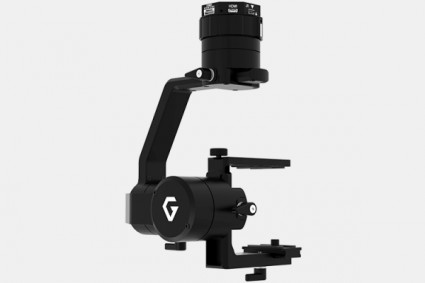
I. Introduction
With many options flooding the market, choosing the right smart TV requires careful consideration of various features. This guide aims to assist you in navigating the sea of choices.
II. Display Technology
A. Overview of Display Technologies
LED/LCD: The most common display technology, LED/LCD TVs use a backlight to illuminate liquid crystal pixels. They offer vibrant colours and are generally more affordable.
OLED: OLED (Organic Light-Emitting Diode) TVs use organic compounds that emit light when an electric current is applied. This results in stunning contrast ratios, deep blacks, and an overall more immersive viewing experience.
QLED: Developed by Samsung, QLED (Quantum Dot LED) combines LED technology with a layer of quantum dots, enhancing colour accuracy and brightness. Samsung QLED TVs are known for their vibrant and dynamic displays.
B. Comparison Of Image Quality
When it comes to image quality, OLED TVs stand out with their unparalleled contrast ratios and deep blacks. LED/LCD and QLED TVs, while not matching OLED in these aspects, offer excellent brightness and colour accuracy.
C. Considerations Based On Viewing Preferences
Brightness: Consider your room's lighting conditions. OLEDs perform well in dark rooms, while LED/LCD and QLED TVs excel in brighter environments.
Contrast Ratio: For cinematic experiences with deep blacks, OLED is the top choice. However, LED/LCD and QLED TVs have made significant strides in improving contrast ratios.
Colour Accuracy: If precise colour reproduction is crucial, OLED and QLED technologies are superior to LED/LCD.
III. Screen Size And Resolution
A. Choosing The Right Screen Size
Selecting the ideal screen size depends on your room's dimensions and viewing distance. For a 75-inch TV, ensure sufficient space for an immersive viewing experience.
B. Common Resolutions
Standard resolutions encompass Full HD (1080p), 4K Ultra HD (2160p), and 8K. Higher resolutions provide sharper images, but the difference may be subtle on smaller screens.
C. Impact Of Resolution On Viewing Experience
On larger screens, higher resolutions like 4K and 8K become more noticeable, delivering clearer details. Consider your content sources, as not all programming may be available in higher resolutions.
IV. Smart Features
A. Operating System
Popular Smart TV Operating Systems: Leading brands use operating systems like Tizen (Samsung), webOS (LG), and Android TV (Sony). Evaluate user interfaces and available apps when making a choice.
App Availability And Support: Ensure your preferred streaming apps and services are compatible and readily available on the chosen smart TV platform.
B. Voice Control And Virtual Assistants
Explore voice control capabilities integrated into the TV, along with compatibility with virtual assistants like Google Assistant or Amazon Alexa.
C. Connectivity Options
Wi-Fi Capabilities: A strong Wi-Fi connection is crucial for seamless streaming. Ensure the TV supports the latest Wi-Fi standards for optimal performance.
Bluetooth Technology: Bluetooth connectivity enhances the TV's versatility, allowing you to connect wireless headphones, speakers, and other peripherals.
D. Smart Home Integration
Compatibility With Smart Home Devices: Check if the TV integrates smoothly with other smart home devices, creating a unified and interconnected ecosystem.
Integration With Voice-Activated Assistants: Seamless interaction with voice-activated assistants enhances user convenience.
V. Audio Quality
A. Built-In Speakers Versus External Audio Systems
Evaluate the TV's built-in speaker quality and consider external audio systems, like soundbars or home theatre setups, for a superior audio experience.
B. Dolby Atmos And DTS:X Support
For immersive audio, look for TVs supporting advanced audio technologies like Dolby Atmos and DTS: X.
C. Audio Output Options
Consider the availability and type of audio output ports for connecting external audio devices.
VI. Processing Power And Performance
A. CPU And GPU Specifications
Higher-end smart TVs boast powerful CPUs and GPUs, enhancing overall performance and responsiveness.
B. RAM And Storage Capacity
Adequate RAM and storage capacity are essential for smooth multitasking and efficient app loading.
C. Impact On Streaming, Gaming, And Multitasking
Consider the TV's processing power for a lag-free streaming experience, responsive gaming, and seamless multitasking.
VII. Connectivity And Ports
A. HDMI Ports
Ensure sufficient HDMI ports for connecting various devices like gaming consoles, Blu-ray players, and sound systems.
B. USB Ports
USB ports offer additional connectivity options for external storage and peripheral devices.
C. Other Essential Ports
Check for ports like Ethernet, optical audio, and component inputs based on your connectivity needs.
VIII. Conclusion
The process of choosing the perfect smart TV involves careful consideration of various factors. Keep in mind that the right smart TV can transform your living room into an immersive entertainment hub, providing endless hours of enjoyment for you and your family.
Know your Smart TV options by checking out Harvey Norman Malaysia today!





